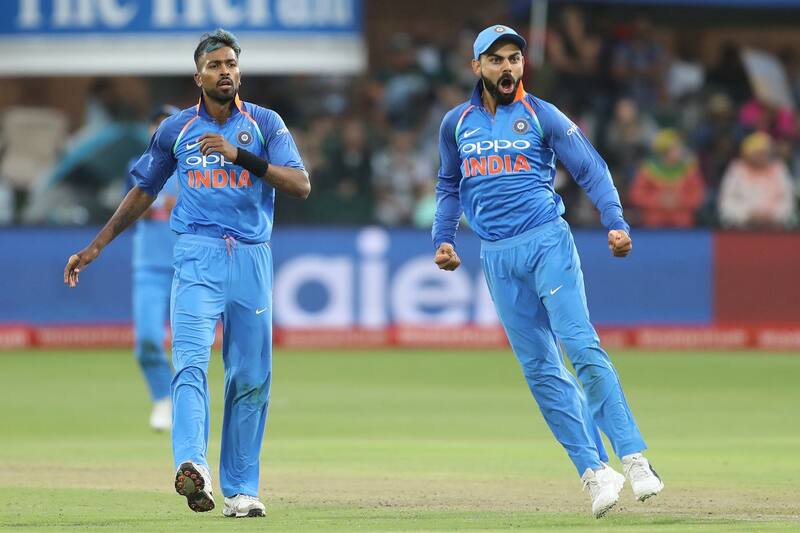
Cricket Country Staff
Editorial team of CricketCountry.
Written by Cricket Country Staff
Published: Jan 22, 2019, 12:59 PM (IST)
Edited: Jan 22, 2019, 12:59 PM (IST)

Virat Kohli has identified the absence of an allrounder of Hardik Pandya‘s calibre as critical to India‘s choices regarding the use of fast bowlers in ODIs, with the team recently forced to play three quicks in Australia. With Pandya absent after he was sent home for misconduct, India played three pace bowlers in two of the three ODIs and in the other chose to play the seam-bowling allrounder Vijay Shankar.
In the first ODI in Sydney which India lost, they played Bhuvneshwar Kumar, Khaleel Ahmed and Mohammed Shami as the three frontline pacers, with Kuldeep Yadav and Ravindra Jadeja the specialist spinners. Ambati Rayudu bowled two overs before his action was called into question. At Adelaide Oval, where his 103 helped India win to level the series, India swapped Khaleel for Mohammed Siraj, who went wicketless and conceded 76 runs, the second most costly figures for an Indian debutant. (ALSO READ: Beating well-balanced New Zealand at home is India’s biggest challenge: Virat Kohli)
For the decider at the MCG, India dropped Siraj for another ODI debutant in Shankar, while dropping Kuldeep for Yuzvendra Chahal who claimed career-best figures of 6/42 to set up victory. Kohli had termed India’s batting in Adelaide as the “ideal batting format”, and pressed to identify his ideal bowling format, the skipper spoke of the seam-bowling allrounder’s role as the decisive factor. (ALSO READ: On-song New Zealand pose threat to India)
This pattern could be replicated in New Zealand, where India are set to play five ODIs. “It depends on the allrounder, to be honest,” Kohli told reporters in Napier ahead of the first match. “If you see the strongest sides in the world, they have two allrounders at the least. Some sides have three. That gives you a lot of bowling options. But unless someone like Vijay Shankar doesn’t play or a Hardik doesn’t play, then a three fast bowlers combination makes sense. If an allrounder is there who can chip in with a few overs of seam-up, then you don’t necessarily need a guy bowling 140 (kph) as the third bowler along with two fast bowlers. As long as we have an allrounder in the side, we can strike a good balance around the bowling lineup, but the moment you don’t have an allrounder firing, that situation of three fast bowlers comes up.” (ALSO READ: Virat Kohli named captain of ICC’s Test and ODI teams of 2018)
India, under Rohit Sharma, regularly played three pace bowlers in the UAE during the Asia Cup last year and Kohli has often picked that combination too. This, he said, was because of the combination surrounding Pandya.
“You talk about the Asia Cup or me backing three fast bowlers, that comes about when Hardik wasn’t available,” he said. “Every time the allrounder is there, you’re never thinking of three fast bowlers unless you are playing on conditions that are totally against spin bowling. I think in ODIs every team goes in with the most balanced side they can get and we are definitely of the same mindset.”
This website uses cookies so that we can provide you with the best user experience possible. Cookie information is stored in your browser and performs functions such as recognising you when you return to our website and helping our team to understand which sections of the website you find most interesting and useful.
Strictly Necessary Cookie should be enabled at all times so that we can save your preferences for cookie settings.
If you disable this cookie, we will not be able to save your preferences. This means that every time you visit this website you will need to enable or disable cookies again.
